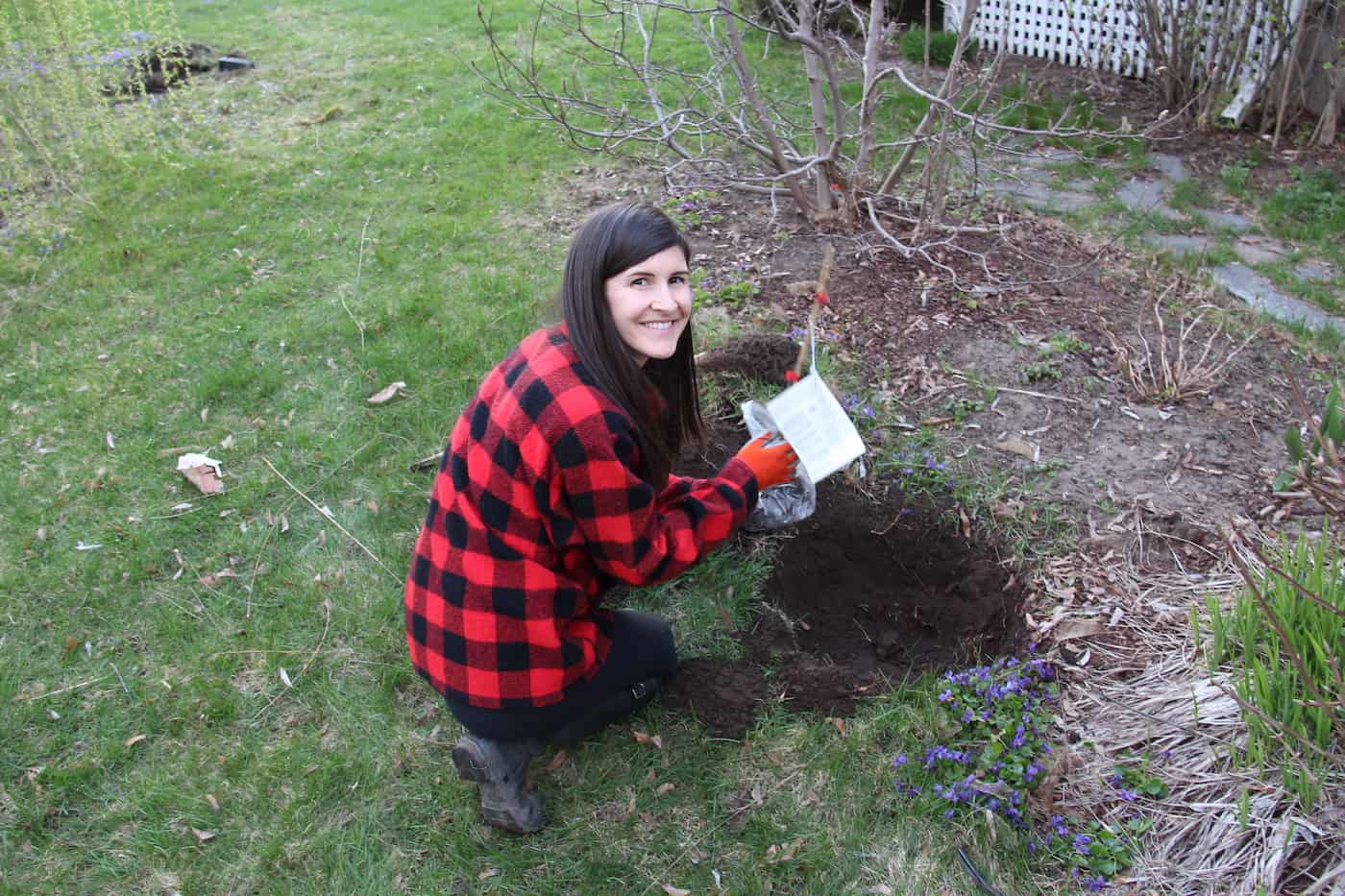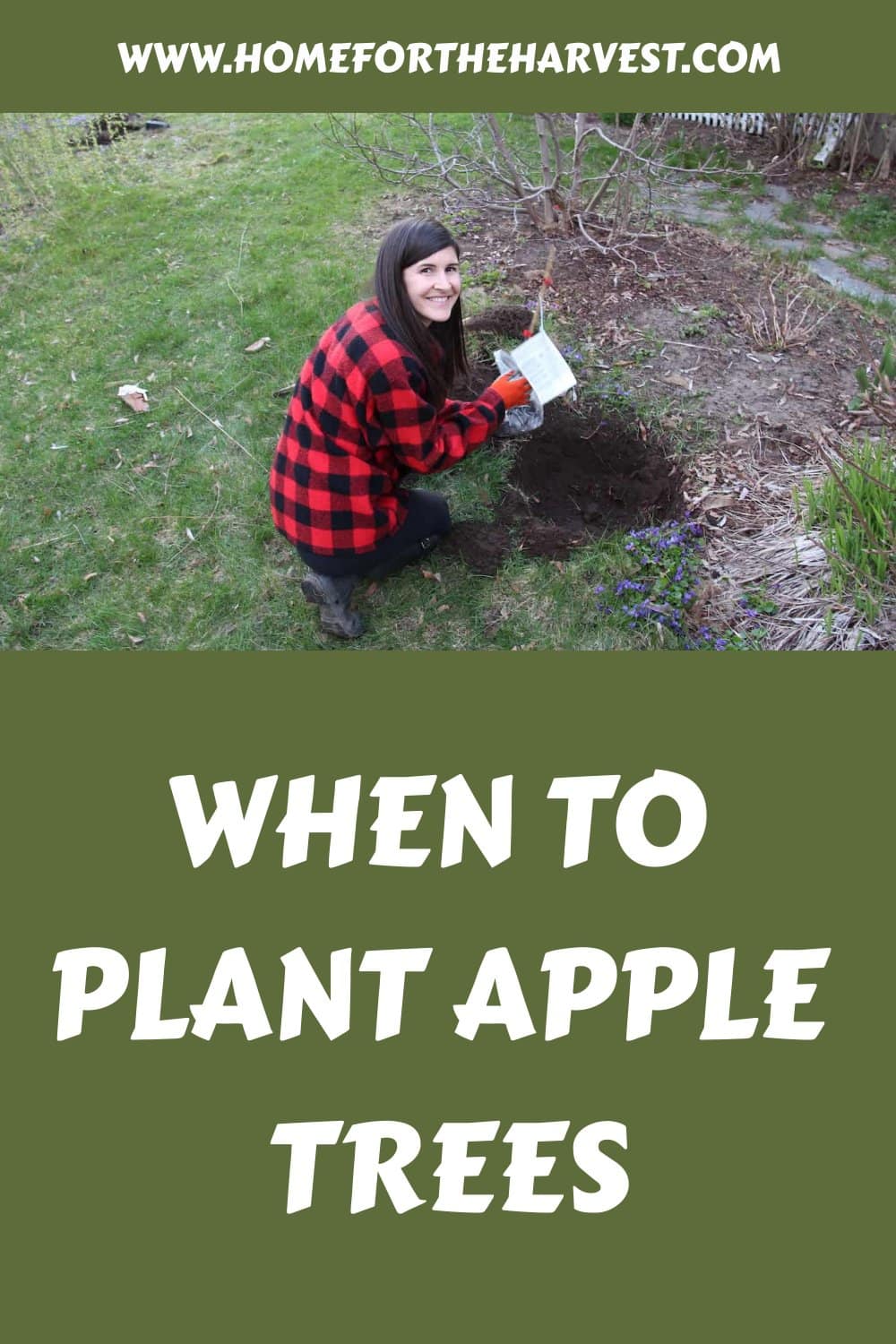The best time to plant apple trees is in spring or early fall. Acclimated trees planted in early spring or early fall tend to become established sooner than those planted in late fall. Avoid planting during extreme temperatures, such as mid-summer heat or freezing winter weather. Mild, overcast days are preferable.
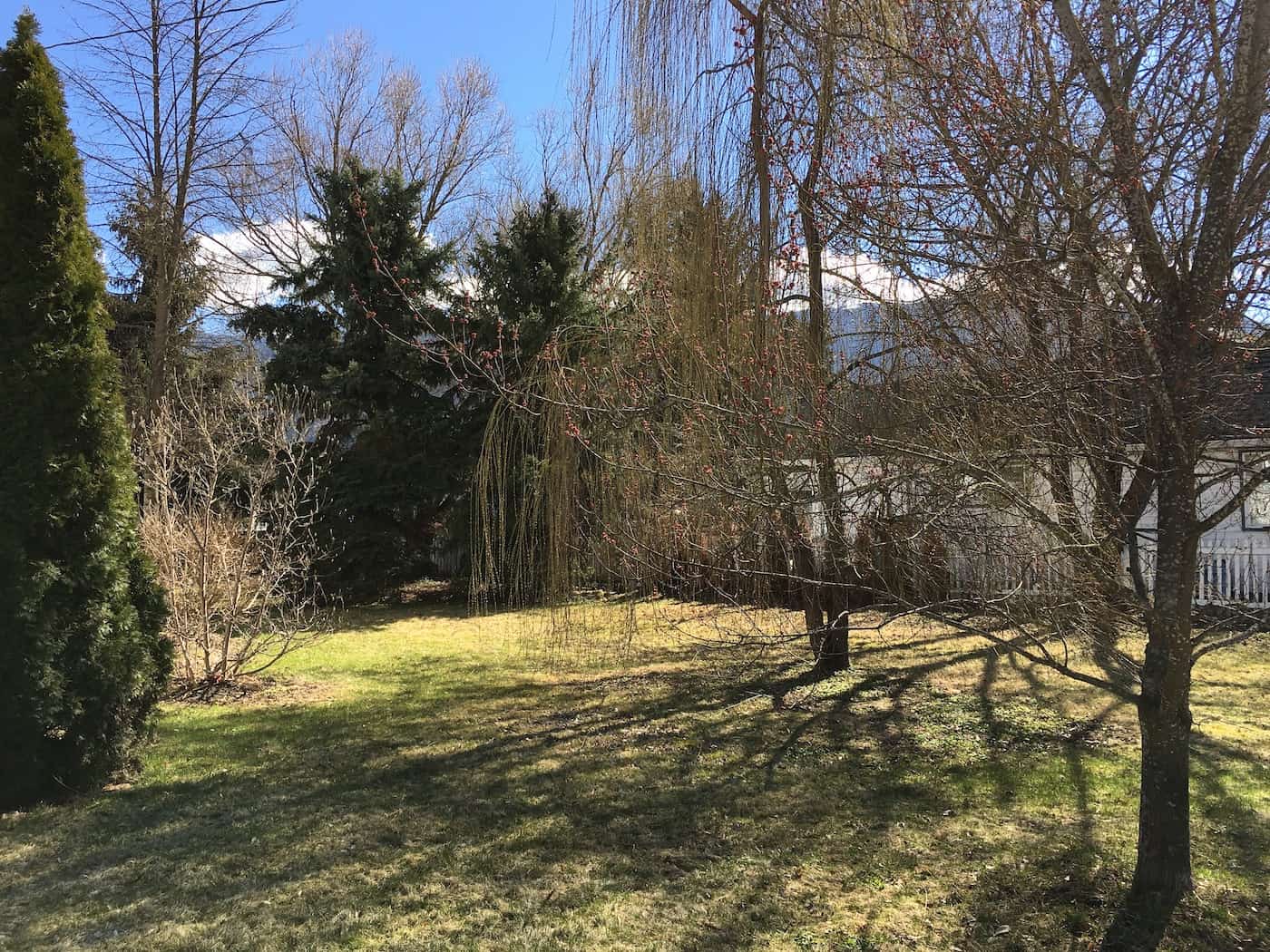
The best time to plant apple trees
Apple trees are best planted in the spring once the ground has thawed and warmed up a bit. Fruit trees can also be planted in autumn once the hottest days of summer have passed. Trees planted in mild, overcast weather tend to become established more quickly than trees planted during extreme temperatures.
The worst time for planting fruit trees is in the heat of summer (especially just before a heat wave). While it is technically possible, new apple trees are much more likely to be stressed by environmental conditions such as hot, dry weather and lack of soil moisture.
Bare-root apple trees should be planted in early spring as soon as you receive them due to exposed roots. Container-grown apples at the garden center can be planted outside as soon as the soil has been worked if they have been growing outdoors. If they have been in a sheltered nursery setting, wait until after the last spring frost to plant.
Winter planting should be avoided unless you live in a climate with very mild winters. If the ground is frozen where you live, it will be difficult for the tree to take root and establish itself. It’s also difficult to dig a planting hole in the frozen ground without a machine!
In general, it’s best to avoid planting any trees during extreme weather conditions – whether that’s excessive heat or cold. If you must plant during these times, be sure to take extra care of your new trees by watering them regularly and keeping an eye on their progress.
Cold climates
The best time for planting apple trees in cool climates like Minnesota is typically in April or May. Dormant bare-root trees are best planted in April, or as soon as the soil has fully thawed. Planting container-grown trees can be delayed to May or even into June as long as the newly planted tree is watered regularly.
Mild climates
The best time for planting apple trees in mild climates like California is typically from December to March. The winters are quite mild in this climate, making winter planting possible during relative dormancy. Make sure you choose low-chill varieties like ‘Anna’ or ‘Beverly Hills’.
Planting apple trees in the spring
Spring is a wonderful time to plant apple trees. It’s best to get them in the ground before the leaves unfurl, but you can also plant them in mid-late spring as long as the soil is kept consistently moist. It takes about 6-8 weeks for a young tree to establish fine feeder roots in the surrounding soil, so the plant will require extra care and attention to watering during those first two months.
Spring planting can begin in early spring as soon as the ground has thawed and can be worked. This planting season also includes late winter in mild climates where the ground does not freeze.
Spring planting is also handy because specialty trees and heirloom apples tend to be more widely available. Old favorites like Jonathan Apples, Granny Smiths, and McIntosh, as well as newer varieties like JonaGold and Honeycrisp are worth searching out instead of settling for whichever fruit variety is in stock at the nearest nursery.
Newly planted apple trees are generally too young to blossom in the spring, but if they do, it can make sense to remove the flowers or the tiny apples that follow. While this can be tough for the gardener (emotionally!), removing the fruit for the growing season will allow the tree to focus on root development, setting it up for vigorous, healthy growth in future years and high productivity in future harvest seasons. Grafted apple trees usually take 3-5 years to bear fruit.
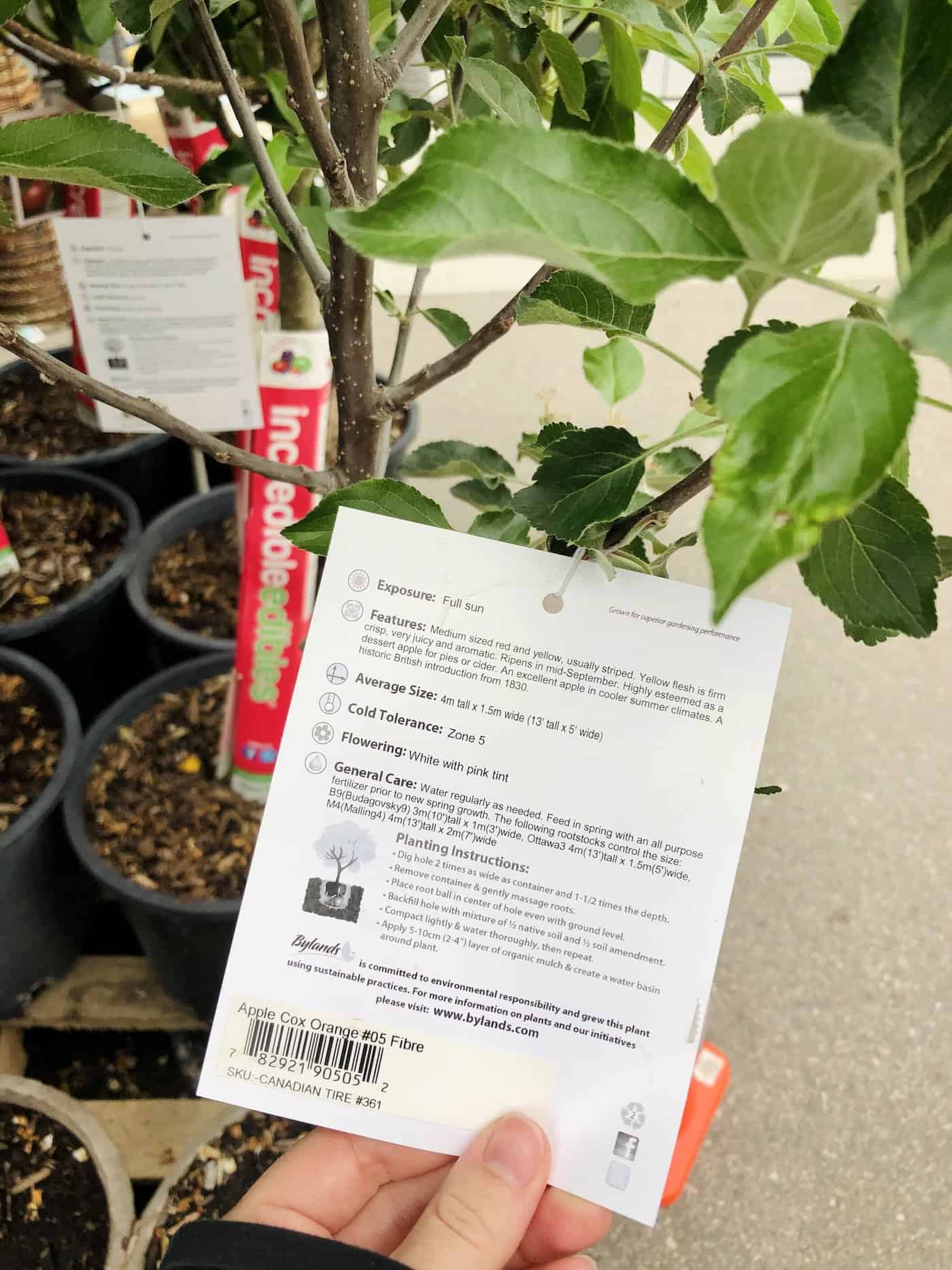
Planting apple trees in the summer
While summertime is not the optimal planting time for fruit tree planting, sometimes it’s the only time available. While large orchards generally carefully time their tree planting, home growers may only have certain weekends available for planting and must take advantage of the time they have!
If you do plant fruit trees in the summer, start by watering them as soon as you get them home. Check that water is draining out of the bottom of the pot. Also, check that the whole root ball is moist and heavy after watering.
If the upcoming weather is expected to be hot and sunny, consider either keeping the tree in its container in a shady spot until the heat of summer has passed or planting it in a temporary sheltered, cool location. This allows you to purchase the tree while it’s available, but avoid stressing it too much in its new home.
If the upcoming weather is expected to be mild and overcast, plant the tree in its permanent location. Dig a wide, shallow hole and fill it with water, watching to make sure the water drains out nicely (hopefully within an hour or two). Then plant the tree in the hole, unfurling any tightly circling roots.
Cover the roots with soil, keeping the soil level of the root ball even with the soil around the hole. Water the planted tree thoroughly and then mulch with a high-quality organic mulch such as composted wood mulch made from yard trimmings.
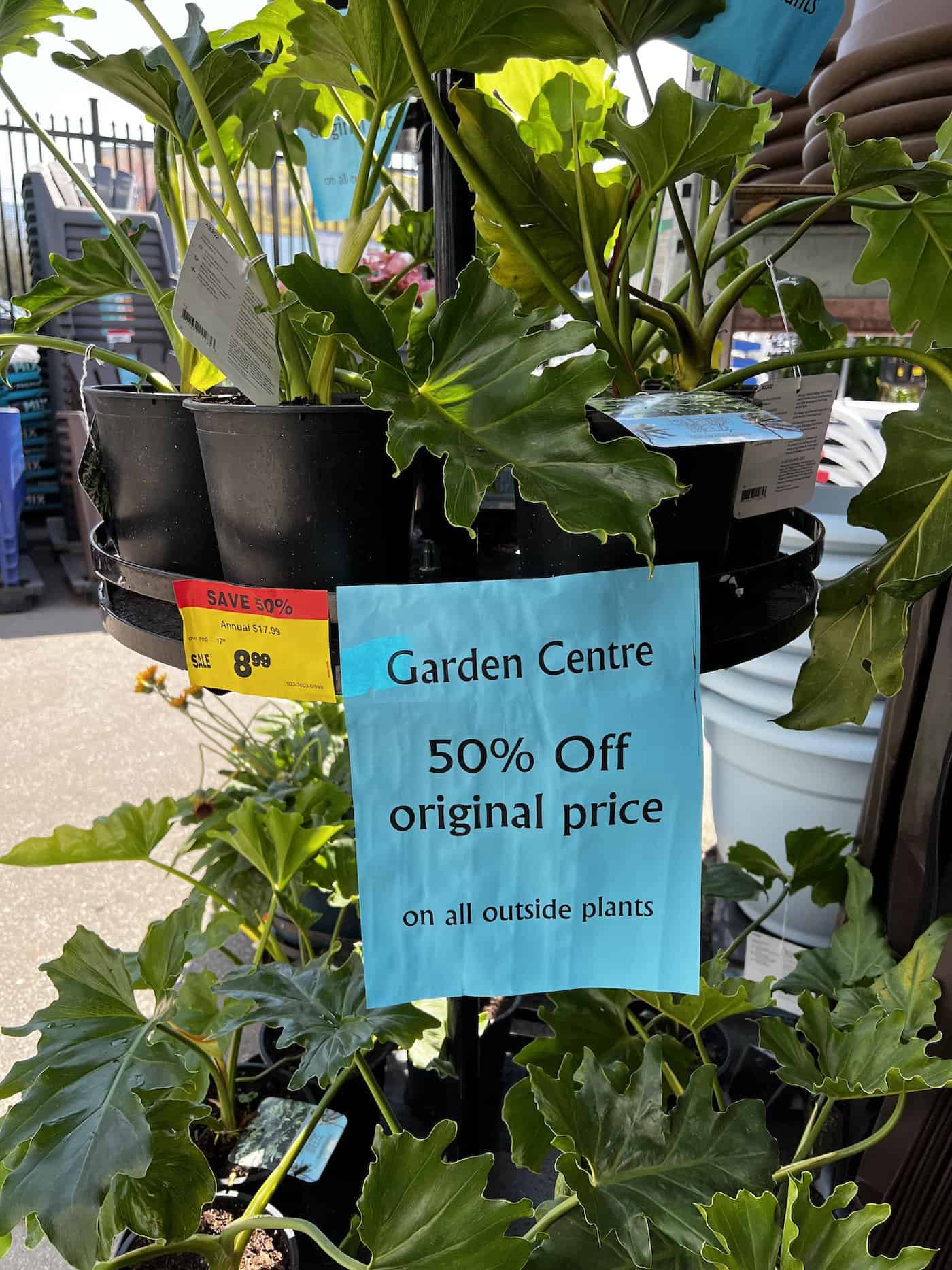
Planting apple trees in the fall
Fall can be a wonderful time to plant a fruit tree, particularly in climates with scorching hot summers and in climates with mild winters. Fall planting may not be as successful in climates with freezing cold winters, as young trees are susceptible to winter damage.
Autumn can also be the perfect time to get many fruit trees on sale at most nurseries. Check your local nursery for specialty types of apples that earlier customers may not have chosen because they aren’t as well-known.
When planting in the fall, check the average local frost dates. Try to get the tree in the ground before the first fall frost (and certainly before the ground freezes).
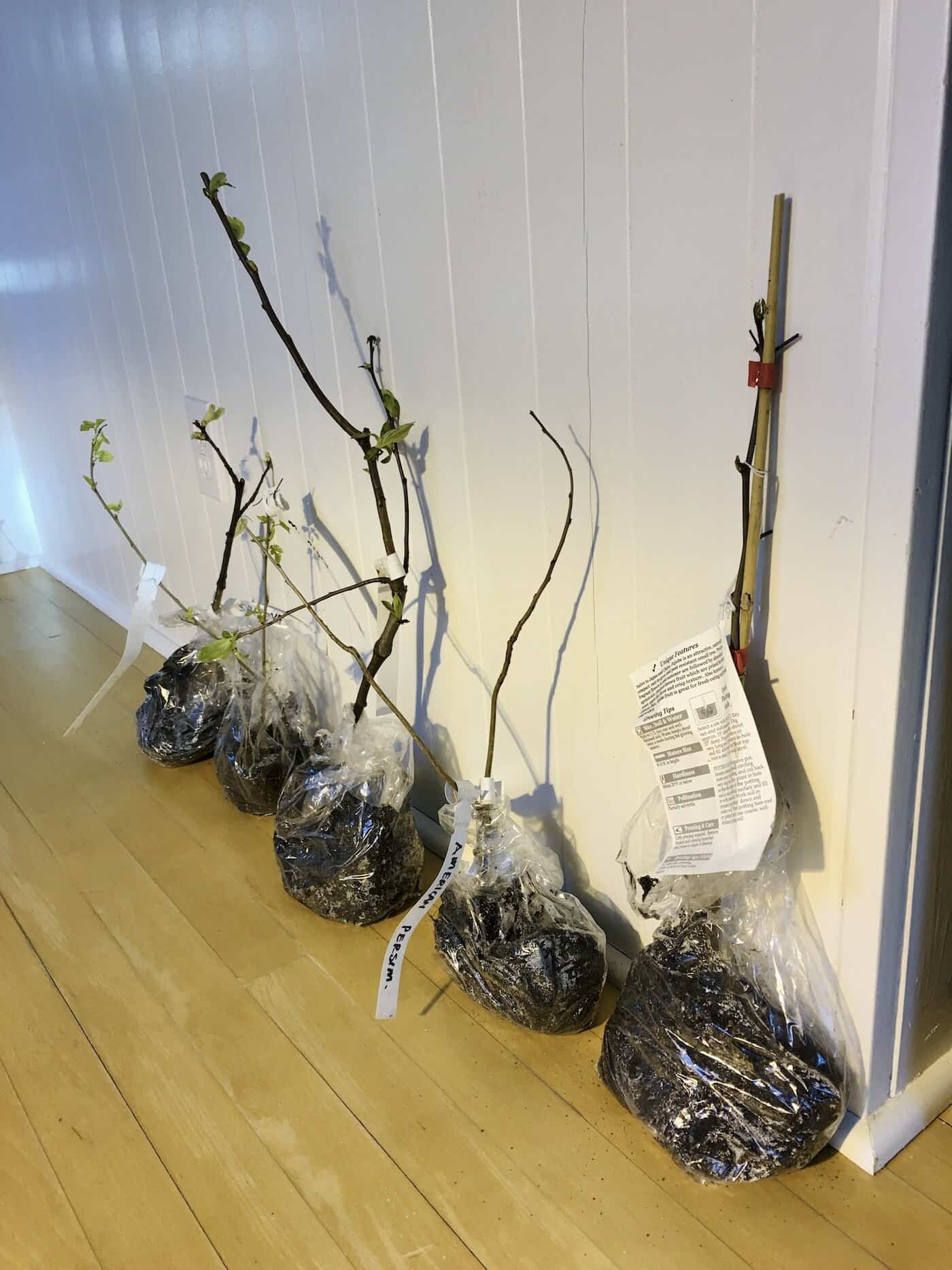
When to plant bare-root apple trees
Bare-root apple trees should be planted as soon as possible after the trees have been received. Specialty nurseries often ship their bare root trees out in very early spring. These trees typically have a plastic bag over the roots to hold in moisture and prevent the exposed roots from drying out. However because the trees are not in a pot full of soil, the roots tend to dry out very quickly.
When your trees are shipped, go outdoors and check to see if the soil is still frozen or is waterlogged (or otherwise unsuitable for planting). When the trees arrive, if the ground is thawed and not fully saturated, plant the trees as soon as practical. This usually means planting the apple trees within a couple of days of receiving them.
If you can’t plant the trees right away for whatever reason, store them in a cool sheltered location out of direct sunlight like a garden shed. Check the roots regularly and keep them moist. You can also “heel in” your trees by temporarily planting them in the soil in a different spot (like the vegetable garden). Keep the roots moist and cover them with soil until your permanent planting spot is ready. Soak the root system for 2-4 hours before planting it in the permanent location.
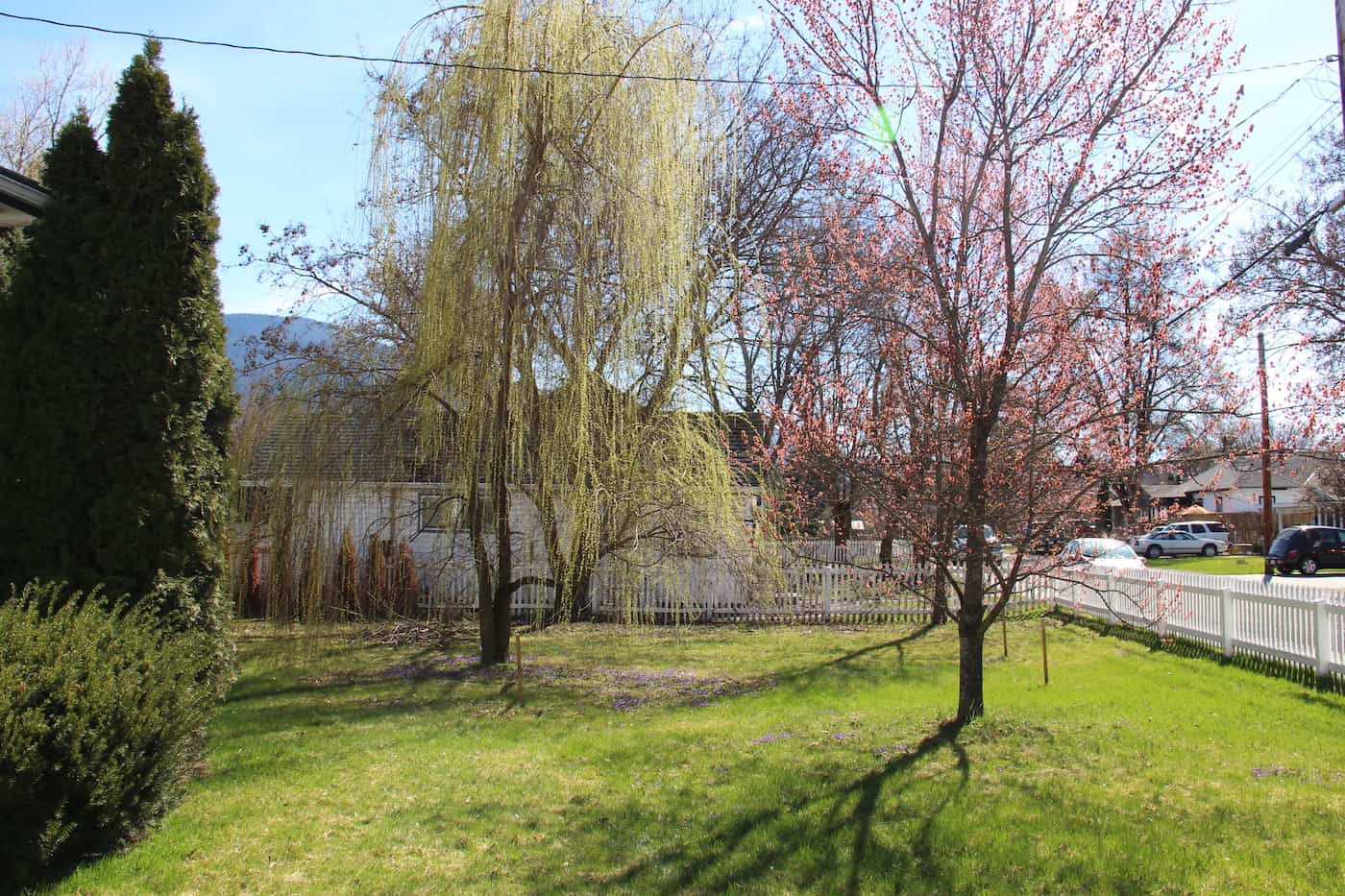
Apple tree planting tips
Regardless of the season, there are a few tips that will help your new tree adapt quickly to its new home. Take the time to plant the tree properly and it’s much more likely to have a long and fruitful life!
Plant trees in an area that receives at least 6-8 hours of direct sunlight per day (also known as full sun). If planting in early spring before the deciduous trees leaf out, be sure that your planting spot won’t become shaded as adjacent trees grow their leaves.
The best time to plant fruit trees and other woody plants is on a mild morning or evening during overcast weather. Temperatures are mild and evaporation is low, making for excellent transplanting conditions.
Dig a planting hole that is about twice as wide as the root system, but no deeper. Pour some water into the hole and check that it drains away, indicating well-drained soil. If the water ponds in the hole, consider doing a soil test to get information and planting recommendations from local soil experts.
Place the root ball in the hole and check that the soil line around the hole is at the same level as the soil around the base of the tree. Don’t bury the trunk any deeper than it was in the pot (and if it is a bare root tree, make sure not to bury the graft union). Tree roots should all be under the soil while the trunk bark should all be above the existing soil. Water the tree after planting to moisten the roots and remove air pockets.
Most apple trees have small root systems when young, but they will rapidly expand in the surrounding soil after the first few weeks. Transplant shock can be minimized when the tree is planted in dormancy (late fall to early spring). Planting before growth begins for the year allows the tree to “wake up gently” with the warmer temperatures and longer days, helping it slowly acclimate to the surroundings.
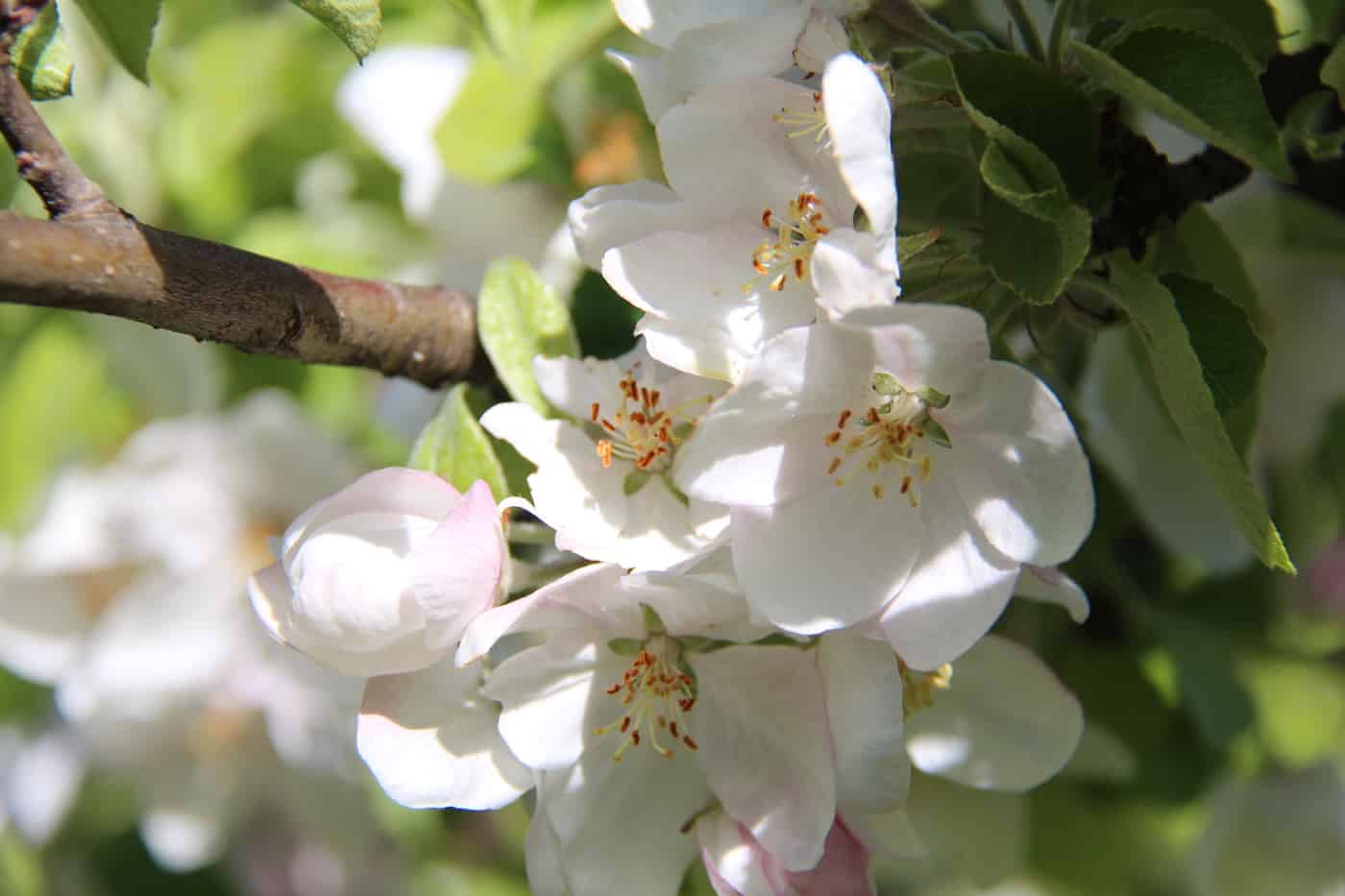
Mulching is an important step to properly caring for your newly planted tree. Use organic mulch like wood chips, pine needles, or compost. Spread the mulch around the base of the tree, making sure to keep it a few inches away from the trunk. The mulch helps protect the roots from heat and cold extremes, keeps the soil moist, and suppresses weed growth. Apply a fresh layer of mulch each year.
Water your new tree regularly during the first growing season (about 1-2 inches per week). Check the soil around the tree before watering to see if it is dry, and always be on the lookout for pond water. While new trees need frequent watering, the roots also need access to oxygen. You can’t grow an apple tree in the middle of a big puddle!
Staking is only necessary for very young or dwarf trees that may be easily toppled over by strong winds. Use two stout stakes driven into the ground on either side of the tree. Attach the tree to the stakes using wide, soft straps or cloth ties. Be sure not to damage the trunk with the straps or ties as the tree grows. The goal is to provide support as the roots venture outwards, not strangle the tree!
Fertilizing your new apple tree is best done in late fall or early spring (before growth begins for the year). Wait until the tree has been in the ground for a month or two and apply an organic fruit tree fertilizer to the soil surface. Use a low-nitrogen fertilizer and follow the directions on the package. too much fertilizer can damage the roots or “burn” the leaves.


